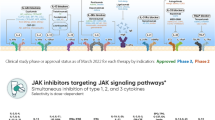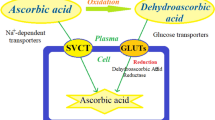Abstract
Background
Chelidonine, a major bioactive, isoquinoline alkaloid ingredient in Chelidonium majus, exhibits anti-inflammatory and other pharmacological properties. However, its molecular mechanisms in asthma remain unclear. In this work we investigated chelidonine’s effect and mechanism in airway inflammation in a mouse model of allergic asthma.
Methods
The mice were sensitized to ovalbumin followed by aerosol allergen challenges and determination of chelidonine’s effect on enhanced pause (Penh), pulmonary eosinophilic infiltration, eotaxin-2, interleukin-4 (IL-4), IL-13, OVA-specific IgE production, and several transcription factors.
Result
Chelidonine strongly suppressed airway eosinophilia, expression of eotaxin-2, IL-4, and IL-13 cytokine production in bronchoalveolar lavage fluid (BALF). It also attenuated lung IL-17, and eotaxin-2 mRNA expression levels. Moreover, it suppressed eotaxin-2 and IL-17 production in accordance with up- and downregulation of forkhead box p3 (Foxp3), and signal transducer and activator of transcription (STAT6) expression, respectively.
Conclusions
Chelidonine has profound inhibitory effects on airway inflammation and this effect is caused by suppression of IL-4, eotaxin-2, and OVA-specific IgE production through the STAT6 and Foxp3 pathways. So chelidonine can improve allergic asthma in mice and be a novel anti-asthma therapeutic.
Similar content being viewed by others
References
Busse Jr WW, Lemanske RF. Asthma. N Engl J Med 2001;344(5):350–62.
Pope SM, Brandt EB, Mishra A, Hogan SP, Zimmermann N, Matthaei KI, et al. IL-13 induces eosinophil recruitment into the lung by an IL-5- and eotaxindependent mechanism. J Allergy Clin Immunol 2001;108(4):594–601.
Sanderson CJ, Warren DJ, Strath M. Identification of a liymphokine that stimulates eosinophil differentiation in vitro. Its relationship to interleukin-3, and functional properties of eosinophils produced in cultures. J Exp Med 1985;162(1):60.
Nakajima H, Takatsu K. Role of cytokines in allergic airway inflammation. Int Arch Allergy Immunol 2007;142(4):265–73.
Komiya A, Nagase H, Yamada H, Sekiya T, Yamaguchi M, Sano Y, et al. Concerted expression of eotaxin-1, eotaxin-2, and eotaxin-3 in human bronchial epithelial cells. Cell Immunol 2003;225(2):91–100.
Kuperman DA, Huang X, Koth LL, Chang GH, Dolganov GM, Zhu Z, et al. Direct effects of interleukin-13 on epithelial cells cause airway hyperreactivity and mucus overproduction in asthma. Nat Med 2002;8(8):885–9.
Chakir H, Wang H, Lefebvre DE, Webb J, Scott FW. T-bet/GATA-3 ratio as a measure of the Th1/Th2 cytokine profile in mixed cell populations: predominant role of GATA-3. J Immunol Methods 2003;278(1–2):157–69.
Richter A, Puddicombe SM, Lordan JL, Bucchieri F, Wilson SJ, Djukanovic R, et al. The contribution of IL-4 and IL-13 to the epithelial-mesenchymal trophic unit in asthma. Am J Respir Cell Mol Biol 2001;25(3):385.
Xu D, Liu H, Komai-Koma M, Campbell C, McSharry C, Alexander J, et al. CD4+CD25+ regulatory T cells suppress differentiation and functions of Th1 and Th2 cells, Leishmania major infection, and colitis in mice. J Immunol 2003;170(1):394–9.
Aseffa A, Gumy A, Launois P, MacDonald HR, Louis JA, Tacchini-Cottier F. The early IL-4 response to Leishmania major and the resulting Th2 cell maturation steering progressive disease in BALB/c mice are subject to the control of regulatory CD4+CD25+T cells. J Immunol 2002;169(6):3232–41.
Park JE, Cuong TD, Hung TM, Lee I, Na M, Kim JC, et al. Alkaloids from Chelidonium majus and their inhibitory effects on LPS-induced NO production in RAW264.7 cells. Bioorg Med Chem Lett 2011;21(23):6960–3.
Gilca M, Gaman L, Panait E, Stoian I, Atanasiu V. Chelidonium majus – an integrative review: traditional knowledge versus modern findings. Forsch Komplementmed 2010;17(5):241–8.
Lee YC, Kim SH, Roh SS, Choi HY, Seo YB. Suppressive effects of Chelidonium majus methanol extract in knee joint, regional lymph nodes, and spleen on collagen-induced arthritis in mice. J Ethnopharmacol 2007;112(1):40–8.
Kim SH, Kim BK, Lee YC. Antiasthmatic effects of hesperidin, a potential Th2 cytokine antagonist, in a mouse model of allergic asthma. Mediat Inflamm 2011;2011:485402.
Kim SH, Hong JH, Lee YC. Ursolic acid, a potential PPARγ agonist, suppresses ovalbumin-induced airway inflammation and Penh by down-regulating IL-5, IL-13, and IL-17 in a mouse model of allergic asthma. Eur J Pharmacol 2013;701(1–3):131–43.
Hoffmann PR, Gurary A, Hoffmann FW, Jourdan-Le Saux C, Teeters K, Hashimoto AC, et al. A new approach for analyzing cellular infiltration during allergic airway inflammation. Immunol Methods 2007;328(1–2):21–33.
Miyahara N, Swanson BJ, Takeda K, Taube C, Miyahara S, Kodama T, et al. Effector CD8+ T cells mediate inflammation and airway hyper-responsiveness. Nat Med 2004;10(8):865–9.
Lukacs NW. Role of chemokines in the pathogenesis of asthma. Nat Rev Immunol 2001;1(2):108–16.
Bettelli E, Dastrange M, Oukka M. Foxp3 interacts with nuclear factor of activated T cells and NF-kappa B to repress cytokine gene expression and effector functions of T helper cells. Proc Natl Acad Sci U S A 2005;102(14): 5138–43.
Song C, Luo L, Lei Z, Li B, Liang Z, Liu G, et al. IL-17-producing alveolar macrophages mediate allergic lung inflammation related to asthma. J Immunol 2008;181(9):6117–24.
Huang F, Wachi S, Thai P, Loukoianov A, Tan KH, Forteza RM, et al. Potentiation of IL-19 expression in airway epithelia by IL-17A and IL-4/IL-13: important implications in asthma. J Allergy Clin Immunol 2008;121(6):1415–21.
Pease JE, Williams TJ. Eotaxin and asthma. Curr Opin Pharmacol 2001;1(3):248–53.
Finkelman FD, Katona IM, Urban Jr JF, Holmes J, Ohara J, Tung AS, et al. IL-4 is required to generate and sustain in vivo IgE responses. J Immunol 1988; 141(7):2335–41.
McKenzie AN, Culpepper JA, de Waal Malefyt R, Brière F, Punnonen J, Aversa G, et al. Interleukin 13,a T-cell-derived cytokine that regulates human monocyte and B-cell function. Proc Natl Acad Sci U S A 1993;90(8):3735–9.
Author information
Authors and Affiliations
Corresponding author
Rights and permissions
About this article
Cite this article
Kim, SH., Hong, Jh. & Lee, YC. Chelidonine, a principal isoquinoline alkaloid of Chelidonium majus, attenuates eosinophilic airway inflammation by suppressing IL-4 and eotaxin-2 expression in asthmatic mice. Pharmacol. Rep 67, 1168–1177 (2015). https://doi.org/10.1016/j.pharep.2015.04.013
Received:
Revised:
Accepted:
Published:
Issue Date:
DOI: https://doi.org/10.1016/j.pharep.2015.04.013




